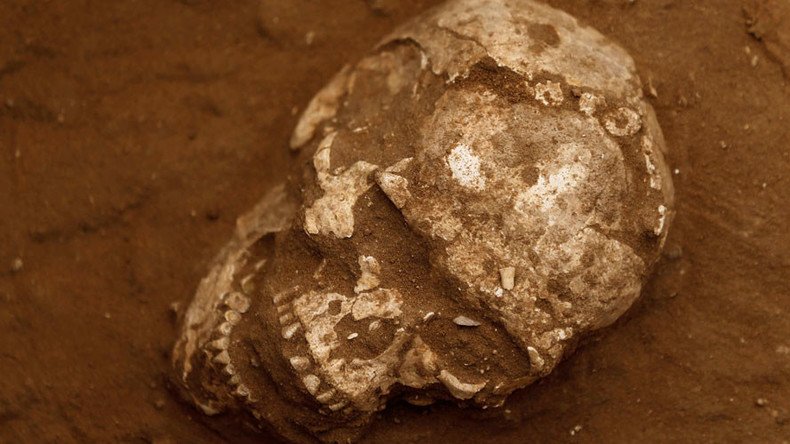3,000yo brain surgery patient likely treated with cannabis, magic mushroom ‘painkillers’ - study

A Russian researcher has published a new study on a 3,000-year-old medical procedure in which the patient was likely anaesthetized with natural hallucinogens and rhythmic music before the surgeon chiselled into their skull.
The study of a Bronze Age man’s skull has shed some light into how ancient people of the Krasnoyarsk region in northern Russia treated intracranial diseases.
Published in the International Journal of Osteoarchaeology, the study suggests that mind-bending natural stimulants such as magic mushrooms, cannabis and even the beat of a drum were used to dull the pain caused by primitive surgical instruments.
Discovered at the Anzhevsky burial ground last year, the human skull is around 3,000 years old. It features a curious hole to the left parietal lobe, which scientists believe was the result of moderately successful ancient brain surgery, or trepanation.
Dr Sergey Slepchenko, of the Institute of Archaeology and Ethnography in Novosibirsk, told The Siberian Times the patient survived the initial procedure but likely died later from complications during the recovery period.
“The surgeon probably stood face-to-face to the patient on the left side. Or the surgeon may have fixed the head with his left arm or between his knees [and] operated with his right hand,” Slepchenko said.
He said the skin on the skull would have been peeled back before the surgeon, and possibly an assistant, scraped into the bone with an unidentified implement. A knife, thought to have been widely used by Karasuk people near the Altai mountains, was found alongside the ancient remains. However, it is not known if it was used in the surgery.
“One of the most dangerous complications of trepanation is bleeding which develops immediately after the skin incision,” Dr Slepchenko said. “To minimize bleeding and reduce pain, the operation had to be carried out as fast possible by presumably highly-skilled surgeon. It is not clear how they stopped the bleeding.”
READ MORE: French archeologists unearth 6,000yo skeletons from ‘ritual’ massacre (PHOTOS)
The practice of trepanation has been observed in a number of ancient civilisations.
A 2016 study led by Julia Gresky, a researcher with the German Archaeological Institute, found evidence of prehistoric ritual brain surgery in south Russia.
The remains of 13 individuals from the Bronze Age displayed identical perforations of the skull, with the study concluding that the majority “survived the intervention for a long time.”













